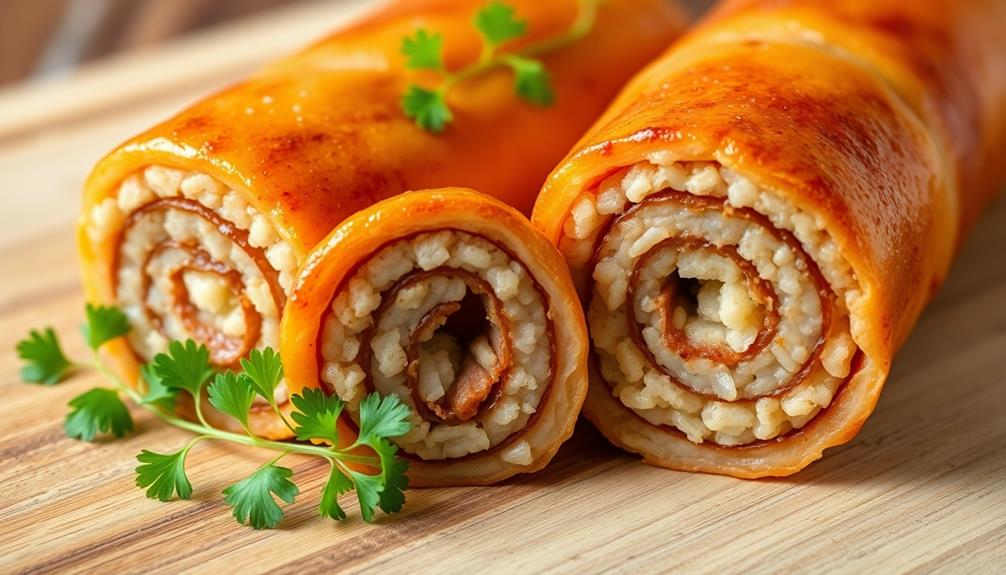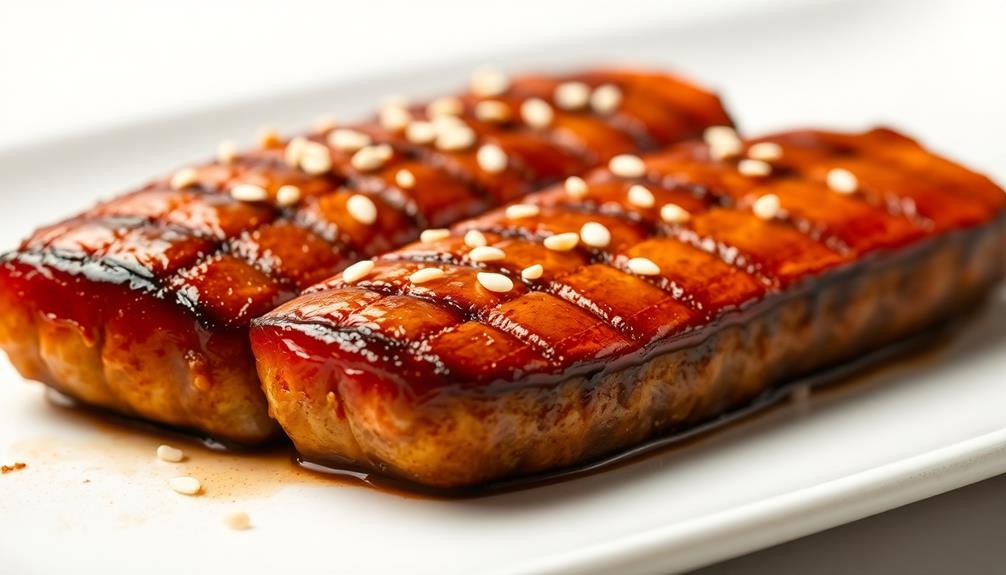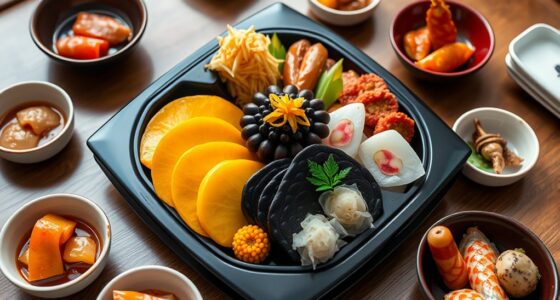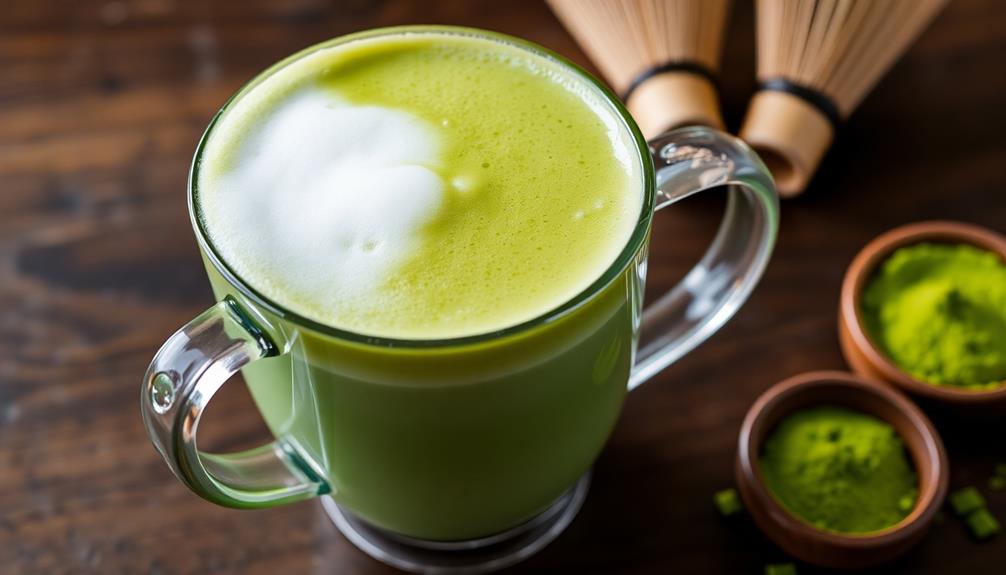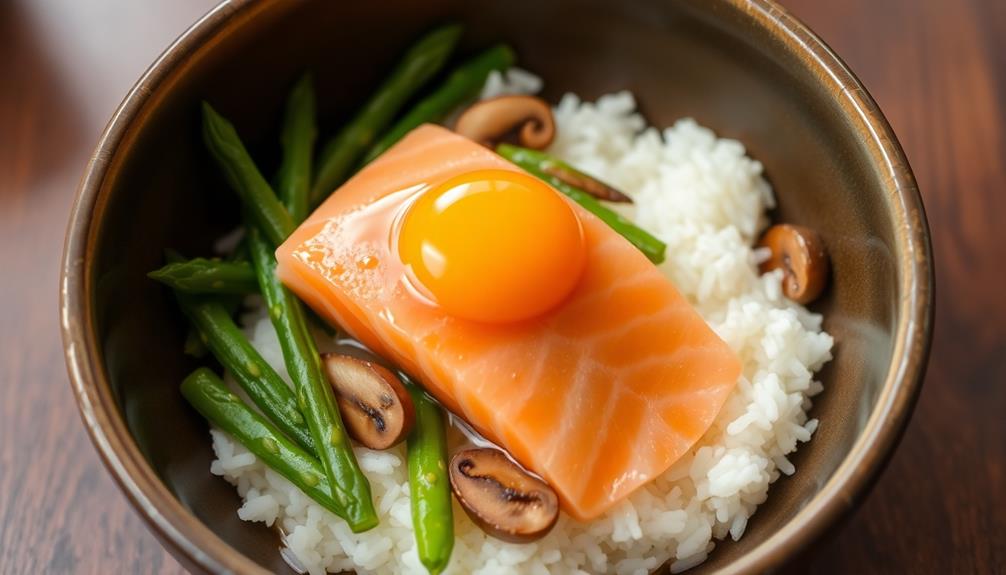You probably know soba noodles are a staple in Japanese cuisine, but did you realize the depth of their history and versatility? From their origins in the Kamakura period to the countless ways they're enjoyed today, these buckwheat beauties offer a world of flavor and texture. Whether slurped hot with savory broths or chilled with aromatic dipping sauces, soba noodles showcase the elegance of traditional Japanese cooking. Intrigued? Dive deeper into the story behind this beloved noodle and uncover why it's become a fixture in households and restaurants across the globe.
Key Takeaways
- Soba noodles are a traditional Japanese food made from buckwheat flour, known for their nutty flavor and firm texture.
- Soba noodles have a long history, dating back to the Kamakura period, and have evolved over centuries with various regional styles.
- Cooking soba involves boiling the noodles until they are tender but still slightly firm, then rinsing them under cold water to prevent stickiness.
- Soba noodles can be served both hot and cold, and are often seasoned with soy sauce, mirin, sesame oil, scallions, and sesame seeds.
- Soba noodles are celebrated for their versatility, allowing for experimentation with seasonal ingredients and flavors, and offering a taste of traditional Japanese cuisine.
History
Soba noodles have a rich history dating back centuries in Japan. These buckwheat-based delicacies have been a staple of the Japanese diet for generations, with their origins tracing back to the Kamakura period (1185-1333 CE). During this time, soba became a beloved dish among the samurai class, who appreciated its simple yet satisfying flavors.
Over the centuries, soba has evolved, with various regional styles and preparations emerging across Japan. From the delicate Edo-style soba of Tokyo to the hearty Kamo-style soba of Kyoto, each region has developed its own unique take on this versatile noodle.
Today, soba continues to be a beloved part of Japanese cuisine, enjoyed in a variety of dishes, from chilled summer soba to steaming hot soba in savory broths. In addition to traditional preparations, modern chefs have begun experimenting with unique ways to serve soba, such as combining it with Japanese wagyu beef for a luxurious and indulgent dish. The rich, marbled texture of Japanese wagyu beef pairs perfectly with the delicate, nutty flavor of soba, creating a truly decadent dining experience. Whether enjoyed at a casual noodle shop or a high-end restaurant, soba with Japanese wagyu beef is a testament to the versatility and timelessness of this beloved Japanese staple.
Whether slurped directly from the bowl or accompanied by delicate tempura, soba remains a beloved and enduring culinary tradition in Japan, with a history that spans generations.
Recipe
Soba is a type of Japanese noodle made from buckwheat flour. Soba noodles have a distinct nutty flavor and firm texture that makes them a versatile ingredient in both hot and cold dishes. This recipe focuses on preparing a simple soba noodle dish that can be enjoyed as a light meal or side.
To begin, soba noodles are typically cooked by boiling them in water until they're tender yet still have a slight bite. It's important to pay attention to the cooking time to ensure the noodles don't become overcooked and mushy.
- 8 ounces (225 grams) soba noodles
- 4 cups (1 liter) water
- 1 tablespoon soy sauce
- 1 teaspoon mirin (Japanese rice wine)
- 1 teaspoon sesame oil
- 2 scallions, thinly sliced
- 2 tablespoons toasted sesame seeds
Bring the water to a boil in a large pot. Add the soba noodles and cook according to the package instructions, usually 4-6 minutes. Drain the noodles and rinse them under cold running water to stop the cooking process.
In a small bowl, whisk together the soy sauce, mirin, and sesame oil. Add the cooked soba noodles to the sauce and toss to coat evenly. Garnish with the sliced scallions and toasted sesame seeds.
When cooking soba noodles, it's important to avoid overcrowding the pot, as this can cause the noodles to stick together. Additionally, rinsing the noodles under cold water helps to remove any excess starch and prevent them from becoming gummy.
Enjoy this simple soba noodle dish as a light and flavorful meal or side.
Cooking Steps
Bring a large pot of water to a boil.
Drain and rinse the soba noodles under cold water to remove any excess starch.
Toss the noodles with your desired soy sauce, seasonings, and ingredients, then serve immediately while hot.
Step 1. Bring Water to a Boil

To begin, bring a large pot of water to a rolling boil over high heat. This is a crucial first step in preparing delicious soba noodles.
Once the water is at a rapid boil, you'll be ready to cook the noodles.
Make sure to use a pot large enough to allow the noodles to move freely as they cook. Bring the water to a full, rolling boil – you'll know it's ready when you see bubbles rapidly breaking the surface. This high heat helps the noodles cook evenly and prevents them from sticking together.
With the water boiling, you can now carefully add the soba noodles. Gently lower them into the pot, stirring occasionally to prevent clumping.
The noodles will cook quickly, usually in 4-6 minutes. Keep a close eye and test a noodle to ensure they reach your desired texture – you want them tender yet still with a pleasant bite.
Step 2. Drain and Rinse Soba Noodles

Once the soba noodles have cooked to your desired doneness, you'll want to drain and rinse them. Carefully pour the noodles into a colander, allowing the hot water to drain away.
Rinse the noodles under cool running water, gently separating any that have stuck together. This quick rinse helps remove excess starch and prevents the noodles from sticking to each other as they cool.
After draining and rinsing, give the noodles a gentle shake to remove any excess water. You can then transfer the noodles to a serving bowl or plate, ready to be dressed with your favorite soba dipping sauce or toppings.
The cool, refreshing texture of the rinsed soba noodles pairs beautifully with bold, flavorful sauces. Don't forget to save a bit of the cooking water, as it can be used to thin out the sauce if needed.
With the soba noodles prepped, you're now one step closer to enjoying a delicious and authentic Japanese meal.
Step 3. Add Soy Sauce and Seasonings

With the soba noodles rinsed and ready, it's time to add the flavor. Grab a small bowl and pour in a few tablespoons of soy sauce. This savory liquid will give your noodles a delicious, umami-rich taste. Don't be shy – you can always add more if needed.
Next, sprinkle in a pinch or two of sesame seeds. These tiny, nutty seeds will provide a lovely crunch and visual appeal.
If you have some scallions on hand, chop them up and toss them in as well. Their fresh, oniony flavor will brighten up the dish.
Step 4. Toss Noodles With Desired Ingredients

After seasoning the soba noodles, toss them gently with your desired ingredients. This is where you can get creative and customize the dish to your taste.
Start by adding any fresh vegetables you have on hand, like sliced carrots, cucumbers, or scallions. You can also incorporate cooked protein, such as grilled chicken, shrimp, or tofu. Gently mix everything together until the noodles are evenly coated.
For a more traditional Japanese flavor, try adding a drizzle of sesame oil and a sprinkle of toasted sesame seeds. If you prefer a bolder taste, mix in a few tablespoons of your favorite teriyaki or peanut sauce.
Don't be afraid to experiment with different combinations of flavors and textures. The beauty of soba noodles is that they pair well with a wide variety of ingredients, allowing you to create a dish that's uniquely your own.
Toss the noodles until everything is well-combined, then serve and enjoy your creation.
Step 5. Serve Immediately While Hot

Serve the soba noodle dish immediately while it's hot. The steam and aromas will waft through the air, creating a tantalizing sensory experience. Quickly transfer the noodles to a serving bowl or plate. The piping hot temperature is essential to fully enjoy the delicate texture and robust flavors.
Garnish the soba with your desired toppings, such as julienned vegetables, sliced scallions, or a sprinkle of toasted sesame seeds. These vibrant additions won't only enhance the visual appeal but also contribute complementary flavors and textures.
Provide chopsticks or forks for easy handling of the long, slender noodles. Encourage guests to dig in and savor each bite while the soba is at its peak. The warm temperature allows the ingredients to meld together, creating a harmonious and satisfying dining experience.
Serve the soba noodle dish promptly to ensure it maintains its optimal temperature and texture. Enjoy the fresh, fragrant, and comforting flavors of this authentic Japanese delicacy.
Final Thoughts
Soba noodles have gained a devoted following for their delicate flavor and versatile culinary applications.
Now, as you've mastered the art of preparing these Japanese delights, it's time to reflect on your soba journey. Embrace the simplicity of this dish – the clean, earthy taste that transports you to tranquil Japanese gardens.
Don't be afraid to experiment, pairing soba with seasonal vegetables, savory broths, or even bold flavors that complement its subtlety.

